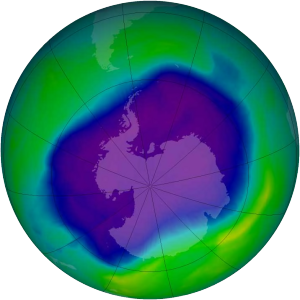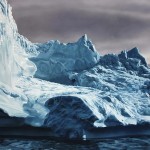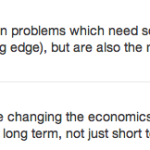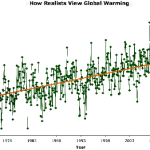Through its influence on atmospheric circulation, [the ozone hole] has helped to shield the Antarctic continent from much of the effect of global warming over the past half century. (Robinson & Erickson, 2014)
That’s not a sentence I expected to read in a scientific paper. Most of us probably don’t think about the ozone hole that much anymore, except maybe to remember to wear a bit more sunscreen if you’re on vacation in Australia. But a new review paper – a really phenomenal paper by Sharon Robinson and David Erickson – lays it all out on the table and drops the mic.

The ozone hole lets in more UV radiation, sure. But this existence of this gaping hole also has a HUGE effect on the climate of the entire Southern Hemisphere, affecting wind circulation, ocean currents, and precipitation. This paper argues that we really haven’t payed enough attention to these seemingly dire climate shifts. For example:
- The ozone hole “tightens the vortex” of westerlies, the band of strong winds that encircles Antarctica – this has a complex effect on climate, effectively cooling East Antarctica but warming the (much-reported on) Antarctic Peninusula by drawing in milder air there.
- A windier Southern Ocean means increased dust inputs into the ocean – and dust contains iron, which is yummy yummy food that promotes big phytoplankton blooms.
- Dust also comes from somewhere – continental sources usually – meaning the ozone hole’s effect on wind has probably been bringing in “Anthropogenic pollution” and potentially transporting non-native species into Antarctica via such long-distance dust trails.
- Water availability has been declining in East Antractica, and wind has further contributed by drying things out – this is leading to lowered growth rates in terrestrial mosses and increasing salinity in Antarctic lakes.
- For the marine environment, increased winds promote upwelling and overturning of water masses in the Southern Ocean. This means that the polar ocean absorbs Carbon Dioxide much more slowly from the atmosphere (“therefore accelerating greenhouse warming”).
These are just some of the most important take home points from my perspective as a marine biologist – there are many more, including climate and food security implications for South America, Africa, New Zealand, and Australia. The paper is an extremely compelling read, if only because:
Changes to wind speeds, water temperatures and ocean overturning likely have [biological] impacts on ocean ecosystems…it could mean that ozone effects on wind patterns are as important to marine food webs as [UV radiation]. (Robinson & Erickson, 2014)
Reference:
Robinson, S. A., & Erickson, D. J. (2014). Not just about sunburn–the ozone hole’s profound effect on climate has significant implications for Southern Hemisphere ecosystems. Global change biology, DOI: 10.1111/gcb.12739






we are all f’d.